Paula and I have had close encounters with the second largest animal on the planet, the Fin Whale, on several occasions. The nutrient rich waters of the Humboldt Current attract them as well as many other large mammals and seabirds to the Chilean coast.
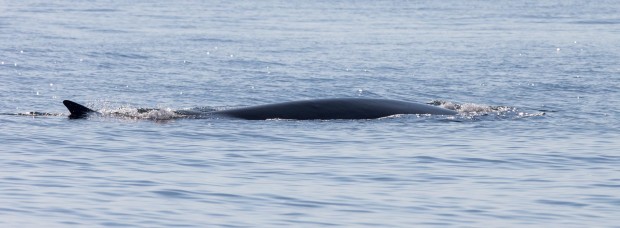
Rorcual comun
Whales and Dolphins, Sea Otters and most other mammals are identifiable as individuals and we know them to be highly social in their behaviour. Rarely do we attribute these traits to the lower groups of smaller animals but soon we were to be surprised by meeting one such special animal.
We wanted to spend some time looking for the animal life upon which the marine profusion of larger animals depended. South of the city of Copiapo, we located an isolated area on the coast to spend a few days. Its small white beach was comprised of crushed shells thrown up by periodic winter storms whilst the daily cycle of tides swept the rocky, seaweed fringed shore, refreshing a myriad of translucent rock pools.
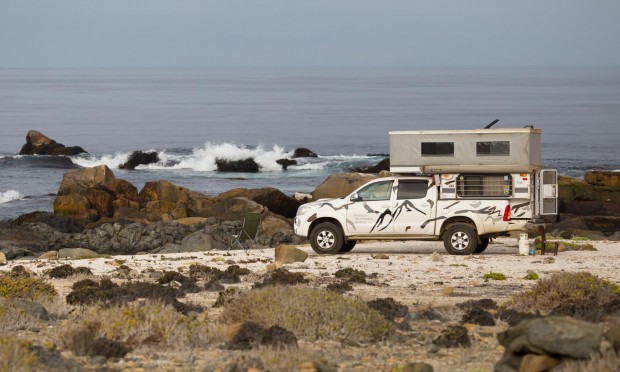
Nuestro camping a Los Burros
Peruvian Boobies, Neotropic Cormorants and Pelicans patrolled offshore, but it was the rocks and the rock pools which attracted us.
We would wait till the turn of the tide to start our searching over the black slippery boulders and we weren’t alone. This was feeding time in the intertidal zone, two species of birds appeared as if from nowhere, each seeking food from entirely different niches. Blackish Oystercatchers would probe deep into crevices for shellfish such as oysters.
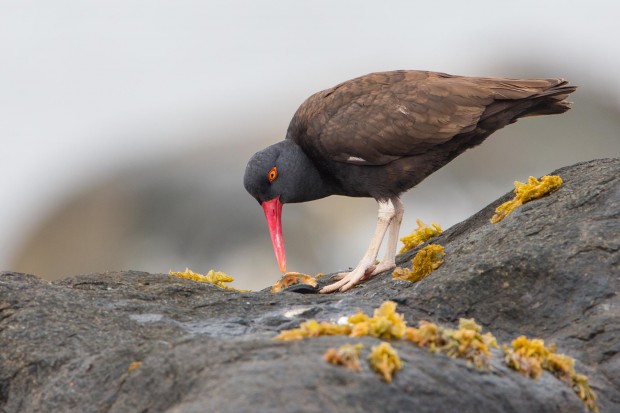
Pilpilen negro
Whilst the Seaside Cinclodes would almost creep over the rocks, extracting small invertebrates with its narrow slightly de-curved bill.
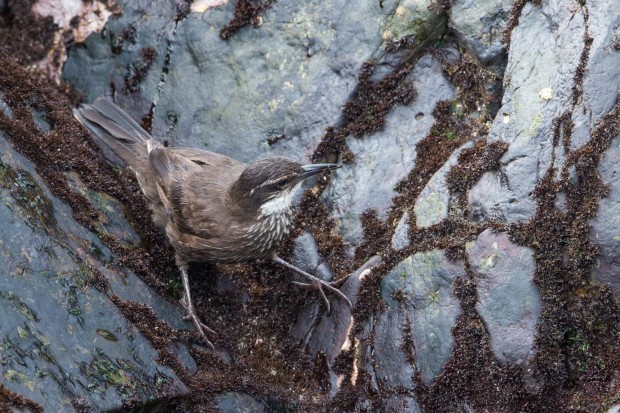
Churrete costero
As the tide receded and more of the rocks appeared so crabs started to emerge from hidden recesses and climb up onto the rocks and graze on the algae.
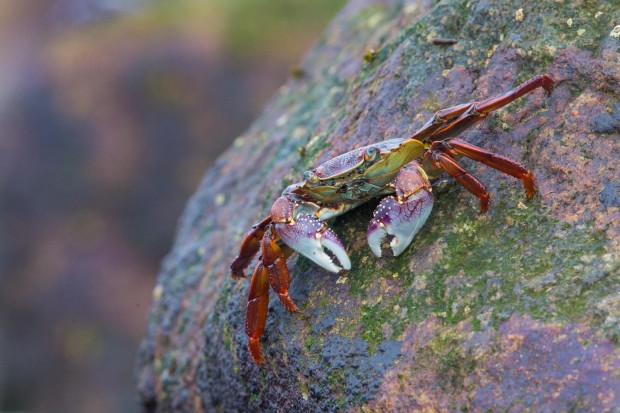
Un cangrejo come alga
At the slightest movement from us the crabs would dart for cover, but if we sat quietly they would approach so close we could eye each other up.
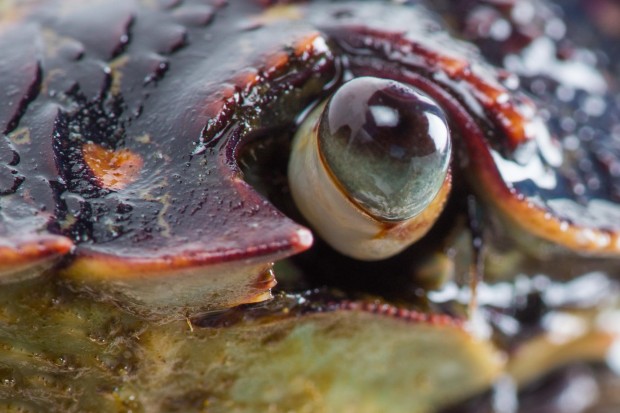
El ojo de un cangrejo
We scrambled with difficulty over the slithery rocks in our searches, peering into the ‘crystal ball’ like pools of water, never knowing what was to be revealed to us. Brightly coloured sea anemones were usually the first to appear, their tentacles waving in the retreating water. The most common was a small crimson one, but in deeper water there were larger orange ones and another even larger, as blue as the midnight sky.
Sea anemones are predators and we noticed that many tiny animals steered well clear of their waving tentacles, not so this particular small crustacean, no doubt protected by its hard outer covering.
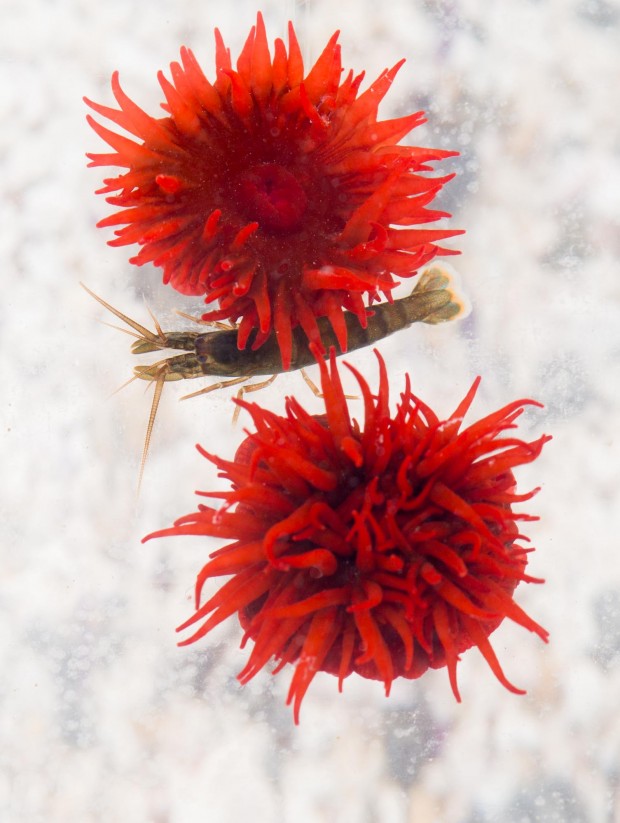
Anemona y crustaceo
An even larger crustacean, a type of prawn, hid in the darker recesses of the pools. This animal was simply gorgeous, red and black and studded with bright white and sky blue dots.
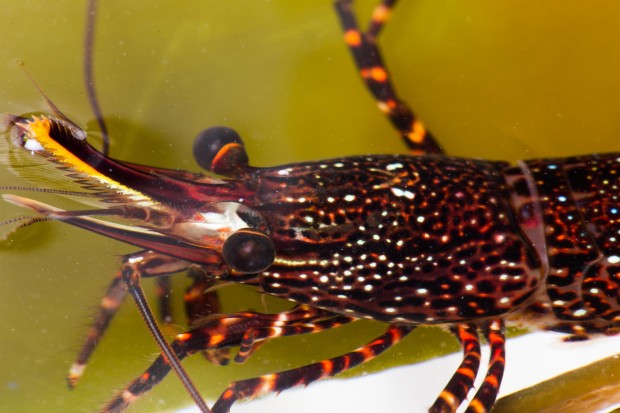
Crustaceo hermoso
There were a number of sea stars, (they used to be called starfish even though they are not fish at all, but echinoderms). They are amazing animals, each arm of a sea star, if broken off, has the capacity to regenerate itself into a completely new animal. The biggest we saw had forty arms and was the size of a dinner plate. The undersides of these animals are covered with thousands of tiny suckers as well as thousands of simple legs but despite the number of legs, sea stars move extremely slowly.
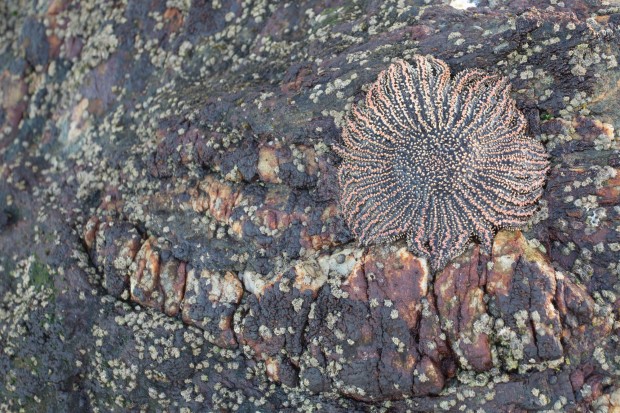
Estrella de mar grande
A much smaller sea star caught our attention, a purple and green five-armed species.
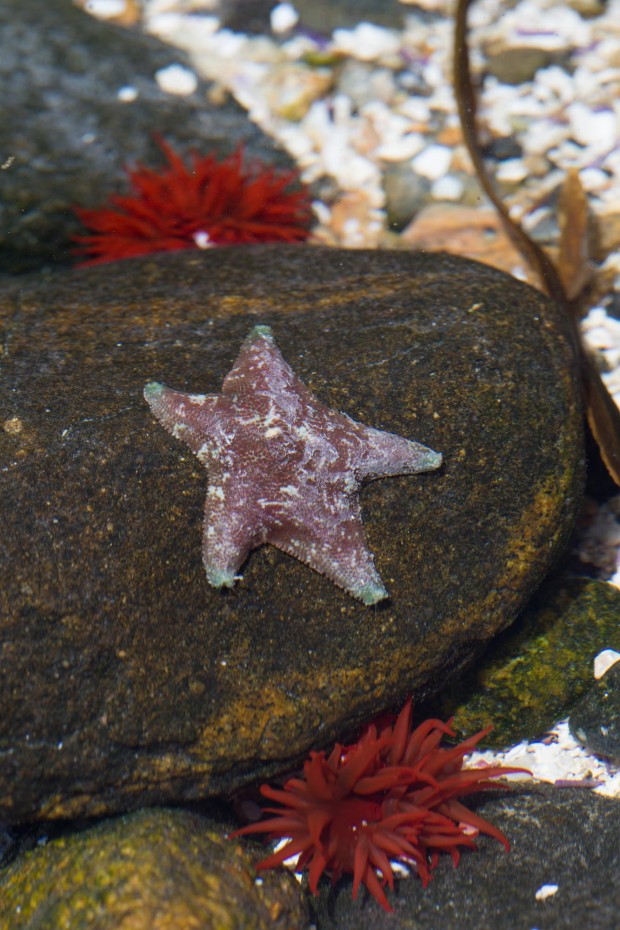
Estrella de mar morada
This small sea star moved over the rocks much faster than we would have expected, on occasions when another animal touched it, the sea star would react by flipping up one of its arms.
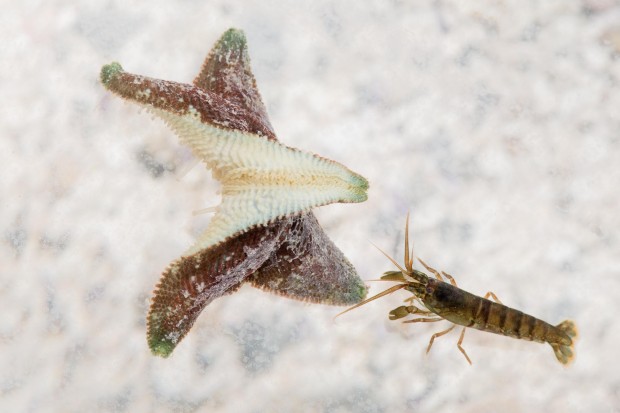
Estrella de mar y crustaceo
In other pools we found similar sea stars but none moved as this one did. We continued to watch its antics and after a while the animal started to move its arms about in an erratic way.
This individual seemed as if it simply liked moving about, as it turned, flipped and bounced. We had found our own star, a ‘dancing ‘ sea star!
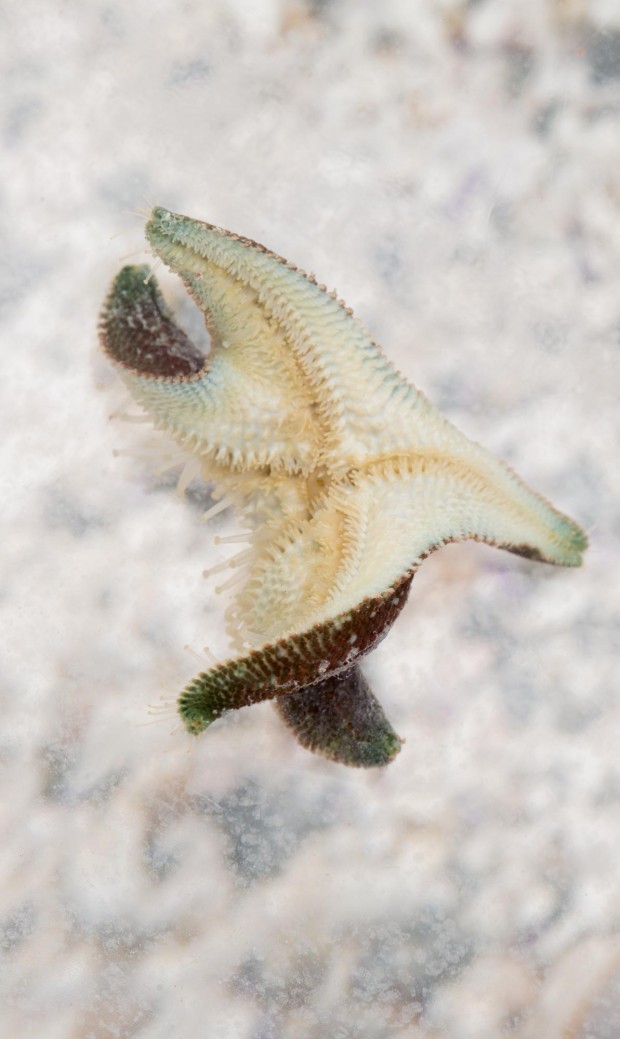
Un estrella de mar baila
Certainly the marine life we found was as rich as we thought it might be, a reflection of the bounty of the Humboldt Current.
As for individualism among animals, maybe after all, the lowliest and smallest of species have characters in their populations and it’s just us humans that do not see or understand the significance of their behaviour.












